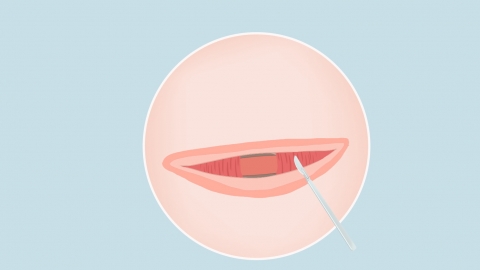What causes slight redness at the cesarean section wound 23 days after delivery, and what should be done?
Under normal circumstances, redness around the incision site 23 days after cesarean section may be caused by normal healing response, clothing friction, localized wound infection, fat liquefaction, or suture rejection reaction. It is recommended to seek medical attention promptly, identify the underlying cause, and follow a doctor's guidance for improvement through general care, medication, or other treatments. Specific causes are analyzed as follows:

1. Normal healing response: At 23 days post-surgery, the wound is still in the recovery phase. The proliferation of new blood vessels may cause the area to appear slightly red, usually without significant pain or discharge. Keep the wound clean and dry, avoid scratching, and gently wipe the area daily with sterile cotton swabs moistened with saline solution to minimize external irritation.
2. Clothing friction irritation: Wearing tight or synthetic fiber clothing can repeatedly rub against an incompletely healed wound, causing localized redness. Immediately switch to loose, breathable cotton clothing to reduce friction on the wound area. Avoid putting pressure on the wound when sitting or moving.
3. Localized wound infection: Poor wound care may allow bacteria such as *Staphylococcus aureus* to invade and cause infection. In addition to redness, symptoms may include pain and discharge. Follow your doctor’s instructions to disinfect the wound with iodophor, then apply topical medications such as mupirocin ointment, fusidic acid cream, or compound polymyxin B ointment. In severe cases, oral antibiotics like cefuroxime axetil tablets may be prescribed to control the infection.
4. Fat liquefaction: In individuals with thicker abdominal fat layers, necrosis and liquefaction of fat tissue after surgery can lead to redness, increased drainage from the wound, and a fluctuant sensation upon palpation. A healthcare provider should perform wound drainage to remove liquefied fat. Regular dressing changes are required afterward, and antibiotics such as amoxicillin capsules, cefaclor capsules, or azithromycin dispersible tablets may be prescribed to prevent infection.
5. Suture rejection reaction: The body may reject surgical sutures, leading to local redness, itching, and possibly exposed sutures. A doctor should perform suture removal to extract the rejected material. After removal, cover the wound with sterile gauze, keep it dry, and avoid water exposure to promote healing.
In daily life, maintain a light yet nutritious diet, and increase intake of protein-rich foods such as eggs and lean meat to support wound repair. Avoid strenuous exercise, move gently when getting up or turning over, minimize tension on the wound, and accelerate recovery through proper scientific wound care.




